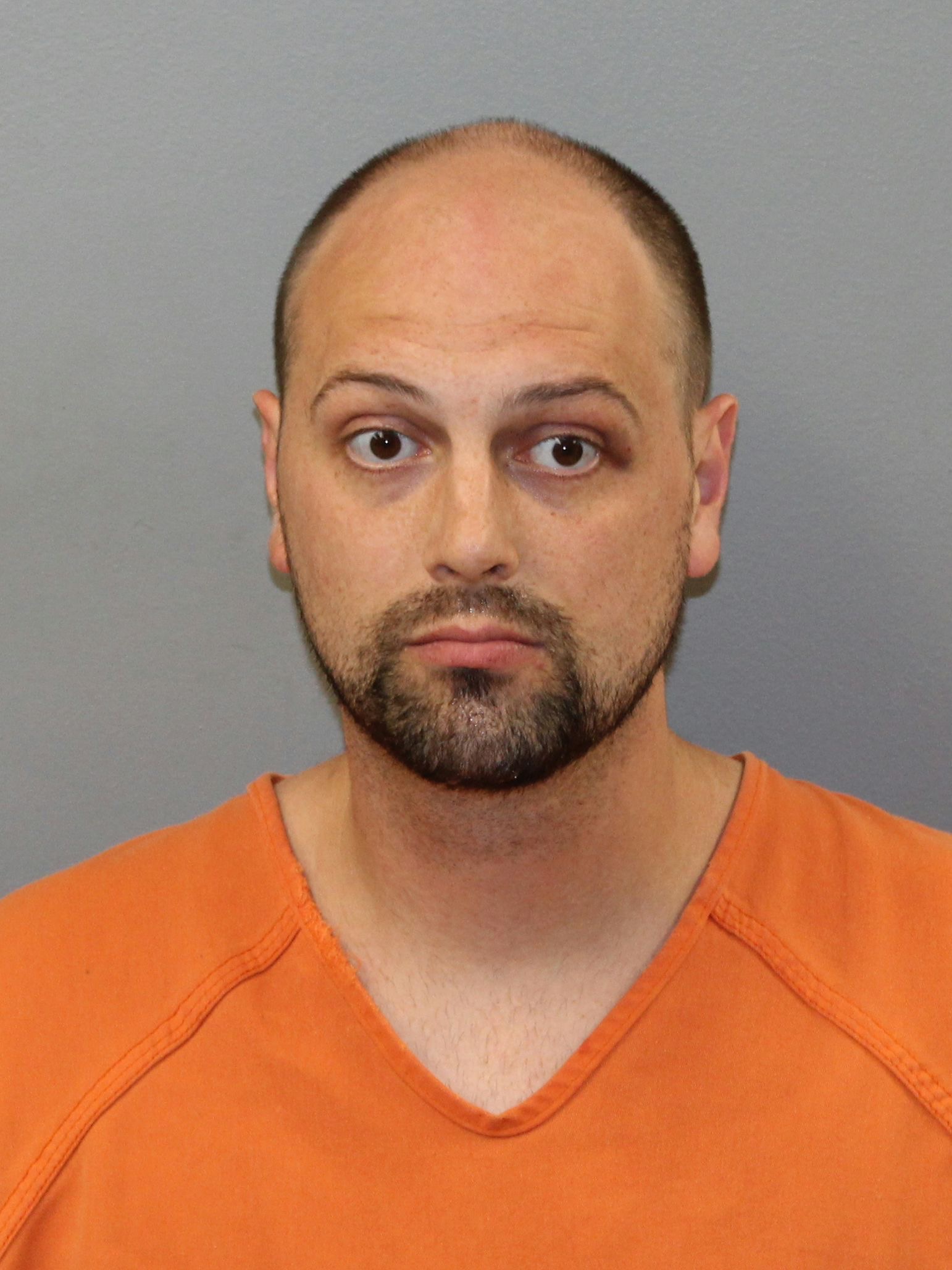Note: Some images and descriptions may be distressing.
In early 1973, a chemical plant based in St. Louis, Michigan, mislabeled two drastically different products. The result: a fire retardant (PBB) labeled as a magnesium supplement was sent to a Michigan Farm Bureau Services facility near Battle Creek and fed to livestock across the region.
The resulting disaster based on the mistake at the Velsicol Chemical plant (formerly known as Michigan Chemical Company) is felt to this day.
Last week, several organizations in Michigan - including the Pine River Task Force based in Alma - came together for a three-day conference to remember one of the worst agriculture disasters in American history.
On May 18-20, the conference was held at the Wright Leppien Opera House in Alma to commemorate and discuss the details of the disaster. The conference included keynote speakers who touched on a variety of environmental and health themes.
The conference also included a tour of the St. Louis factory site, and showed the documentary “The Poisoning of Michigan,” which features the late Dr. Alpha “Doc” Clark from McBain, who was one of the leading people to investigate what was happening.
What Was the Disaster?
The products mixed up at the Veliscol Chemical plant were polybrominated biphenyl - otherwise known as PBB - which was used as a fire retardant for plastics and other materials and sold under the name FireMaster, and a feed supplement to help with growth, bones and milk production for various livestock called magnesium oxide, sold as NutriMaster.
Both products are powdery substances, and according to investigations, that led to the mix-up along with improper storage of the packaging, among other negligent actions by both the chemical company and the Michigan Farm Bureau. Both companies were aware of a possible mix-up soon after it happened, but workers at the Farm Bureau were ordered to continue mixing it with the feed, according to court documents mentioned in a report.
Many animals were fed the tainted feed, including dairy cows. Farmers soon began to notice illness in their animals but could not figure out what was causing the sickness. According to one report, a farmer in southwest Michigan began to notice his cows losing their appetite and reducing milk. With time, the cows developed abscesses and other strange and severe disabilities. The state considered it one farmer’s troubles and would not investigate. Almost a year later, however, the cause was discovered by the FDA, other organizations and individuals who highlighted the troubles.
In an archived 9&10 News interview with late Dr. Alpha Clark, he said he was at a Holstein show in Fremont talking to a farmer when he realized the same issues they were having there were the same issues he was seeing in Northern Michigan.
According to the Michigan Department of Health & Human Services, more than 500 farms in Michigan had animals that were quarantined once the disaster was made public.

When all was said and done, 8.5 million Michigan citizens were exposed to PBB by eating the animal products, and over 1.5 million farm animals died and their products destroyed.
Official estimated numbers:
- 30,000 cattle died
- 4,500 pigs died
- 1,500 sheep died
- 1.5 million chickens died
- 800 tons of animal feed contaminated
- 5 million eggs contaminated
- 18,000 pounds of cheese contaminated
The mass amount of animals and products that were affected resulted in hundreds of farmers burying their animals on their land. Cows were also transported in large wagons and trailers to state-owned mass graves in Northern Michigan; one grave is in Kalkaska County and one is in Oscoda County. There is also one county-owned burial site in Gratiot County.

Farmers Remember the Tragedy
Farmers who received the contaminated feed from the Michigan Farm Bureau remember how their farms were affected and what it was like to watch it happen.
One account from a farmer named Y. Yarnell found in an oral history project said: “First the cattle got abscesses, aborted calves and their milk production went way down until we couldn’t afford to feed them anymore because they weren’t giving enough milk to pay the bills. So we had to sell them. At the time the agriculture department was pushing selling low tolerance saying, ‘There’s nothing wrong with them. You have to sell them.’ So we did, but if I had to do it over again. I would’ve never put them on the market. I would’ve had them shot like some of the people did. And I would’ve gone to jail if I had to because I didn’t realize at the time how sick we were going to get.”
This was the reality of the PBB disaster - thousands of livestock dead, devastated farms and families poisoned from the prolonged exposure to contaminated farm products.
Another farmer, M. Zuiderveen, simply stated: “It took the heart right out of farming because we lost those herds.”
“I come from a town called Freemont,” Terri Fountain said at the recent conference. “It was one of the epicenters that this poisoning was effecting. Our church divided over this, because there were farmers and businessmen in our church. The business men families took their church to an elementary school and the farmers stayed at the church. No one wanted to be associated with the farmers who had poisoned everybody, like it was our fault. These are proud men. Fremont was run by farmers. My problem is today, no one knows about this in Fremont.”
At 18 years old, Fountain married her high school sweetheart and moved to his family farm in Fremont. The year was 1977. Three years prior, at the age of 15, her husband had to shoot more than 200 of his beloved 4H cows with his hunting rifle because they were poisoned.
“It was one shot at a time, and every time he shot them, he looked in their eyes. He was devastated,” Fountain said.
After losing all their livestock and subsequently the money they provided, the family lost the farm a few years later. In time, many of the members that lived on the farm died of health issues related to the exposure of PBB.
To read more quotes about the anger, frustrations and devastations of the farmers, you can read more on the oral history research by Brittany Fremion of Central Michigan University here.
Environmental and Health Impact
At the time, not much was known about PBB, which was one reason that lead to the hesitancy and delay to investigate. However, after investigation continued, it determined PBB is a toxic substance. Even today, however, some say more research is needed.
Before much was known about PBB and the disaster was made public, farmers ate the contaminated eggs and drank the contaminated milk. Interviews with farmers stated that their families started to get symptoms similar to the cows. Tiredness, loss of appetite and even strange nail growth. Doctors and veterinarians had no explanation for the symptoms at the time.
Jane-Ann Crowley is a member of the PBB Citizens Advisory Board. She grew up on a farm exposed to PBB during the disaster.
“My family lived on a farm in Remus. Our grain that my dad took to the Farm Bureau to be ground up had PBB added to it, which we gave to our livestock. Then we consumed them and their biproducts and we became contaminated. It was a couple of years after that event that we started to have health impacts. I was 8 when I was first exposed. My family believes that we continued to experience ongoing contamination through the soil. Even later in life, our exposure was still prevalent and we could see among ourselves that we were having problems,” Crowley said.
“I started having seizures right around the time I was 8, and I would have them sporadically for the rest of my life. It’s been about 10 years since my last one. The neurologist always said I didn’t have epilepsy, it wasn’t an electrical problem. I spent some time at the Cleveland Clinic and the top neurologist at the clinic was very fascinated by me and interested in learning about the poisoning, and felt that could very possibly be the cause of the problem,” Crowley said.
“I’ve had 10 miscarriages, two ectopic pregnancies, two heterotopic pregnancies and one live birth. When I first spoke to my doctors about my concerns about PBB and passing it on to my child, they said don’t worry, PBB doesn’t pass the placental barrier. But we now know that’s not true. PBB was passed through breast milk, we know there are epigenetic changes in the next generation. My daughter has her own health issues now that are most likely but not definitively related to her exposure through me,” Crowley said.
During the early years of the disaster, Edie Clark was an aide to Michigan Speaker of the House Bobby Crim. She played an instrumental role in informing the press of the facts of the situation when state and federal agencies attempted to withhold the information.
“The reality is that most of the good information we got at the start of this crisis did not come from state agencies, it came from farmers and their children. It came from the people that shot their cows in the middle of their pasture even though they could have legally marketed and sold them out for human consumption,” Clark said.
Sources say at least tens of thousands of people in Michigan, Chicago, and throughout the Midwest and U.S. unknowingly consumed PBB in contaminated milk, meat, and eggs before the extent of the poisoning and the impact of PBB in food was understood.
It has been discovered that PBB builds up in bodies over time, and some may still have amounts of PBB in their bodies. Though the Michigan Health Department is no longer monitoring people, Emory University continues to do studies.
The mass graves were chosen and tested based on many reasons, the largest considering groundwater contamination. The Department of Environmental Quality was monitoring groundwater around the Kalkaska burial site from 1977 to 2015 because of “minimal likelihood of movement” of the PBB into the nearby groundwater. PBB is not water soluble, meaning that its chemical makeup makes it unlikely to travel to groundwater sources. Because the pits were lined with layers of clay, the low permeability of clay prevents much water movement, in turn preventing PBB from traveling to nearby water sources. However, the nearby soil can become contaminated.
The event resulted in many lawsuits against Michigan Farm Bureau Services and the Michigan Chemical Company regarding public health, environmental health and financial losses.
Today, the location in St. Louis where the PBB was produced is an environmental hazard site. The factory produced several environmental pollutants, and today the Pine River near St. Louis and downstream are highly contaminated, officials said.
RELATED READ: Special Report: Pollution on the Pine River
For more information and to be involved in cleanup efforts, visit the Pine River Superfund Citizen Task Force Website.


